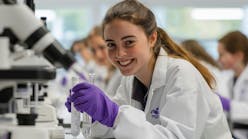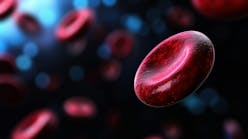Like it or not, the practice of laboratory medicine is inextricably tied to interacting with pathologists—that group of clinicians I once heard (self)-described as “a bunch of anti-social, basement-dwelling nerds.” Whether that’s true or not (none of the many pathologists in the room at the time disagreed), and regardless of whether you may find this a fraternity to be one that you comfortably associate with, the clinical laboratorian will sooner or later have to face the pathologist’s favorite specimen type: formalin fixed, paraffin embedded (FFPE) tissue. As we’ll discuss in this month’s installment of The Primer, this poses particular but not insurmountable challenges as a starting material for molecular testing.
FFPE 101
First, a quick review of what is involved in making FFPE samples, in non-specialist terms. It begins with freshly biopsied (or perhaps necropsied) tissue of interest being taken and placed in a preservative solution. As the name implies, the function of this solution is to preserve or “fix” the tissue, from microbial degradation but also to preserve, as far as possible, microscopic details in the cellular structures. Historically, the most common fixative is buffered formalin.
Following fixation, the tissue fragments are examined and cut into smaller, manageable pieces of probable diagnostic value in a process known as “grossing.” These pieces are then placed within small, uniquely labeled plastic cassettes with a cage-like structure. These are immersed in warmed liquid paraffin wax, which floods the void space in each cassette and is then allowed to cool and harden. Each cassette finally contains a spatially constrained, chemically fixed piece of tissue. This tissue block can now be conveniently stored at room temperature for long periods (verging on indefinite), and is suitable for having thin microtome slices made for placement on microscope slides prior to staining and microscopic examination.
This microscopic examination is where our pathologists then have to rely on their eyes to discern the normal from the pathologic. As any non-specialist who has tried to do this can attest, it is far from easy and requires a great deal of experience in knowing what looks normal and what doesn’t. What “normal” is turns out to depend significantly on the fixative used. All fixatives, including formalin, induce characteristic appearances. A pathologist’s job is therefore made much easier by sticking as far as possible to a single fixative type and knowing what it looks like. Historically, formalin has been the fixative of choice for visual examination of tissue (and it’s because of this precedent that the molecular laboratorian will probably face an uphill battle in suggesting that alternative fixation agents may be more suitable for molecular testing).
What makes formalin such a good physical/visual fixative—and such a problematic one for molecular testing—is that it preserves the tissue by creating a random “web” of covalent chemical cross linkages between independent cellular molecules wherever they are in close proximity. While most of these cross links are between proteins, they can also involve lipids and (critically, for our purpose), nucleic acids. The result is that most cells and subcellular components are now physically attached to one another in this web, meaning they have little or no capacity for movement, diffusion, or even significant conformational changes. It’s important to consider that the individual formalin linkages occur in a random fashion, however, and their overall density relates to formalin concentration (usually, a fixed value); the length of time the tissue was exposed to the formalin (often highly variable); and the size of the tissue pieces, which influences how quickly and deeply the formalin solution permeates the tissue (also, rather variable).
FFPE meets MDx
Now imagine your local pathologist gets out of his or her basement, and brings you a few slices of FFPE tissue with a request for some sort of molecular test. An example might be a situation in which the sections contain regions of a tumor, and the pathologist wants to know the mutational status of a particular gene in the tumor to assist in selecting an effective chemotherapy regimen. The available molecular tools in your lab to address this all expect extracted, intact nucleic acids as their starting material; your first problem is thus one of how to get the DNA (and/or RNA) out of this cross-linked web of tissue.
Immediate approaches usually include digestion of the material with proteases in detergent solutions at elevated temperatures. Despite the formalin cross-linking, this can work at dicing the proteins up and effectively breaking the “web” into a lot of small molecular pieces in solution, including the nucleic acids you will need to recover as your test material. While the recovery rates are not as good as with fresh tissue, the extreme sensitivity of molecular approaches helps to compensate. On a purely mass basis, the recovery of nucleic acids is good enough by these sorts of approaches.The problem is, if you now take your recovered nucleic acids and try to detect a specific sequence element through PCR or RT-PCR, you’ll generally find very poor sensitivity of what you normally find a good assay (when applied to fresh nucleic acid templates).
The problem arises from the fact that scattered randomly throughout the nucleic acid strands—and thus, likely on some fraction of your RT-PCR reaction’s template molecule, between the forward and reverse primer sites—are one or more formalin crosslinks. During the extension of a nascent DNA strand along the template molecule by a polymerase, if it encounters one of these crosslinks, the polymerase is effectively stopped. Recall that in a PCR reaction, it is essential for the initial strand extensions to proceed past their opposing primer site in order to create a template for the second and subsequent PCR cycles; thus, any single crosslink on a nucleic acid strand between the amplicon primer sites effectively renders that template strand non-detectable. If enough formalin exposure has occurred to create at least one cross link on each strand within the amplicon region of all template molecules, you’re now going to be getting false negative results on your RT-PCR assay; and even in the case of less formalin exposure, your effective detection efficiency is at least reduced.
Solutions and solutions
Now that we have grasped the problem, it’s possible to start considering what some solutions (no pun intended!) might be. The first, of course, is the solution: why not substitute some other fixative agent which doesn’t damage nucleic acids for formalin? While a number of such “molecular friendly” fixatives do exist, they have not generally come into wide use. The reasons for this are good ones, and they hinge on the preceding discussion. These fixatives each induce their own characteristic tissue appearance under microscopic examination, and your local pathologist isn’t keen on having to spend a great deal of time in re-training his or her eye to what’s normal and what isn’t. Parallel fixation of tissue from a single source in both formalin and an alternate fixative is sometimes discussed, but scarcity of tissue on some samples and duplication of workload in having two parallel streams generally makes this option unappealing too. Like it or not, the molecular laboratorian will probably have to find some way to work with the formalin.
However, all is not lost. A first step can be effectively communicating with the pathology department, outlining the importance of minimizing formalin exposure times. As a random process, more cross links occur over time, and once a piece of tissue is fixed enough for practical purposes, additional exposure just increases the likelihood of any given nucleic acid section having a disabling cross link. If molecular testing may be in the future for a given tissue sample, pathologists can know not to leave the sample in fixative longer than necessary.
A second approach lies in the design of the RT-PCR assays themselves. Since the crosslinking is a stochastic event, longer amplicons are more likely to be inactivated than short ones, in a directly linear fashion (that is, a 400-base pair target amplicon is twice as likely to gain a crosslink as a 200-base pair one under the same fixation). The shorter the RT-PCR amplicon, the better the chance it will perform normally on FFPE derived samples. If the laboratorian has the luxury of knowing this will be a specimen type when the assay is being designed, he or she can consider making the amplicon as short as possible; 50 to 75 base pairs will work appreciably better than 500 base pairs.
Note also that the problem is primarily a matter of cross-linkages on nucleic acid strands, not (as is sometimes mistakenly thought) strand breakage. While the impact on template suitability for amplification is identical between these two, breakage is a non-recoverable state while cross linking might, in theory, be reversible. This theory has been turned into practice by a number of product vendors familiar to the molecular laboratorian, manufacturers that sell reagents designed to be used during the nucleic acid extraction protocol to specifically reverse (hydrolyze) formalin linkages to RNA and/or DNA.
A combination of some or all of these approaches can help to ensure that RT-PCR-based assays can be successfully employed on FFPE tissue. With the increasing use of personalized medicine, particularly in oncology, requests for molecular testing on FFPE tissue samples are becoming more common, and an understanding of the above can help this be effective.
Finally, note that the discussion so far has focused on RT-PCR based methods. That’s because they’re the most common class of molecular tools, and because the root issue here (template cross links blocking polymerase extension) applies equally to sequencing or other nucleic acid amplification strategies. However, what about methods which only require hybridization to their target sequences? While formalin cross links can still cause some problems for hybridization (imagine, for instance, if two DNA strands become linked together; denaturation and access of the probe for hybridization is no longer possible), in general, hybridization of a probe to a nucleic acid target sequence is less disrupted by cross links than is polymerase extension. Thus, FISH or similar techniques are often less problematic to employ on FFPE tissue than are nucleic acid amplification-based methods.





